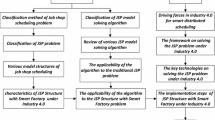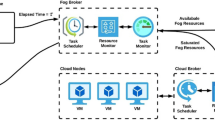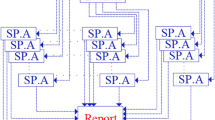Abstract
This paper proposes a dynamic adaptive coscheduling model DASIC to take advantage of excess available resources in a network of workstations (NOW). Besides coscheduling related subtasks dynamically, DASIC can scale up or down the process space depending upon the number of available processors on an NOW. Based on the dynamic idle processor group (IPG), DASIC employs three modules: the coscheduling module, the scalable scheduling module and the load balancing module, and uses six algorithms to achieve scalability. A simplified DASIC was also implemented, and experimental results are presented in this paper, which show that it can maximize system utilization, and achieve task parallelism as much as possible.
Similar content being viewed by others
References
Ousterhout J K. Scheduling techniques for concurrent systems. InProc. the 3rd ICDCS, 1982, pp.22–30.
Arpaci R, Dusseau A, Vahdat A, Liu L, Anderson T, Patterson D. The interaction of parallel and sequential workloads on a network of workstations. InProc. ACM SIGMETRICS’95/PERFORMANCE’95 Joint Inter. Conf. Measurement and Modeling, 1995, pp.267–278.
Dusseau A, Arpaci R, Culler D. Effective distributed scheduling of parallel workloads. InProc. ACM SIGMETRICS’96 Conf. Measurement and Modeling, 1996.
Du X, Zhang X. Coordinating parallel processes on networks of workstations.J. Parallel and Distributed Computing, 1997, 46(2).
Du X, Dong Y, Zhang X. Effectively scheduling parallel tasks and communications on networks of workstations. InProc. Euro-Par’97, 1997.
Atallah M, Lock C, Marinescu D. Co-scheduling compute-intensive tasks on a network of workstations: Model and algorithms. In Proc. the 11th ICDCS, 1991, pp.344–352.
Efe K, Schaar M A. Performance of co-scheduling on a network of workstations. InProc. the 12th ICDCS, 1993, pp.525–531.
Anderson T E, Culler D E, Patterson D A, the NOW team. A case for NOW (Networks of Workstations).IEEE Micro, Feb. 1995, pp.54–64.
Author information
Authors and Affiliations
Additional information
This work was supported by the Climbing Program of China and the Telecommunication Advantage Org. of Japan (TAO).
LU Sanglu received her B.S. degree in 1992, M.E. degree in 1995 and Ph.D. degree in 1997 all in computer science from Nanjing University. She joined the faculty of Department of Computer Science, Nanjing University in 1997. Her research centers on distributed system and parallel computing.
ZHOU Xiaobo received his B.S. degree and M.E. degree in computer science both from Nanjing University in 1994 and 1997, respectively. Presently, he is a Ph.D. candidate in Department of Computer Science, Nanjing University. His research centers on distributed system and parallel processing.
XIE Li received his B.S. degree in mathematics from Nanjing University in 1964. Presently he is the Vice President of Nanjing University and Professor of Department of Computer Science. His research interests include distributed system, distributed database and parallel processing.
Rights and permissions
About this article
Cite this article
Lu, S., Zhou, X. & Xie, L. A model for dynamic adaptive coscheduling. J. of Comput. Sci. & Technol. 14, 267–275 (1999). https://doi.org/10.1007/BF02948515
Received:
Revised:
Issue Date:
DOI: https://doi.org/10.1007/BF02948515




